Achieving Excellence in Ecommerce Customer Care

E commerce customer care has never been more critical than it is in 2025. You’re not just selling products anymore; you’re building relationships. Did you know 90% of American shoppers say customer service influences their buying decisions? It’s no surprise, then, that 93% of customers return to brands that deliver outstanding support.
Over 50% of customers will switch to a competitor after just one bad experience.
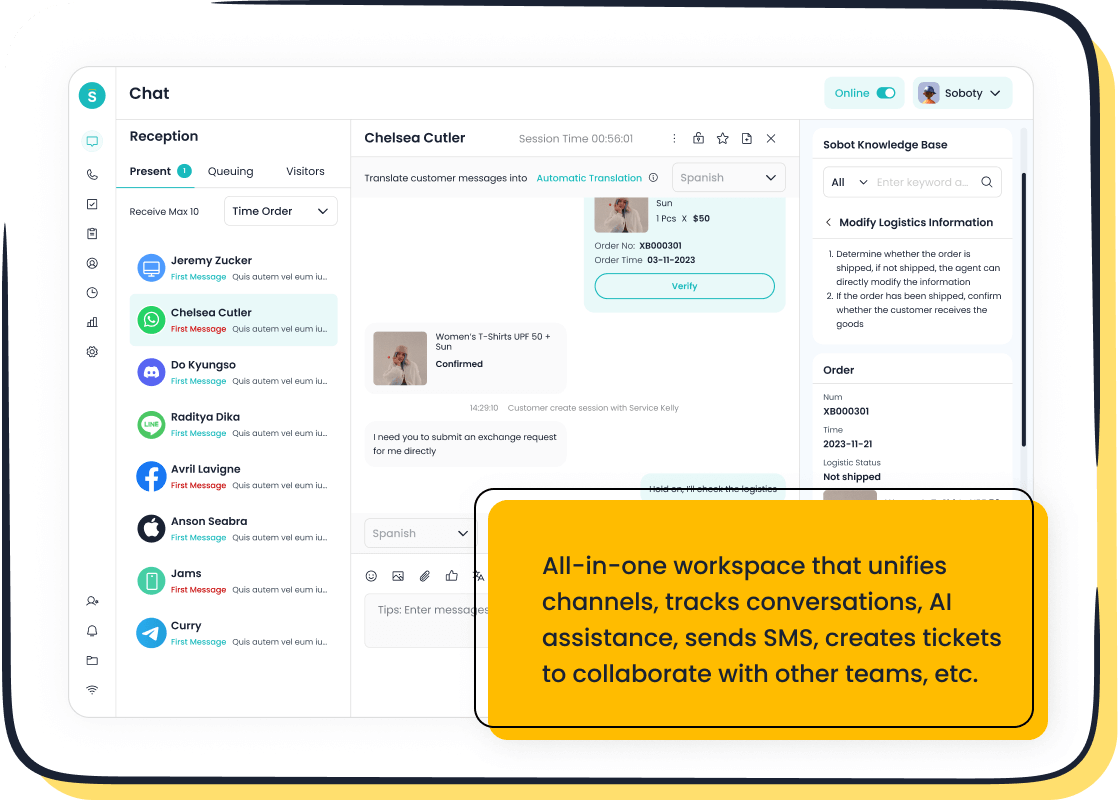
With eCommerce revenue projected to hit $4.32 trillion by 2025, meeting customer expectations isn’t optional—it’s essential. Tools like Sobot’s Live Chat can transform your website user experience, helping you deliver fast, personalized support that retains customers and builds loyalty.
Understanding Ecommerce Customer Care
Defining ecommerce customer care
Ecommerce customer care is more than just answering questions. It’s about creating a seamless experience for your customers from the moment they land on your website to the post-purchase stage. Think of it as the backbone of your online store, ensuring every interaction leaves a positive impression.
What does this look like in practice? It includes providing real-time order tracking, managing returns efficiently, and offering timely updates. For instance, when customers can track their orders, they feel more in control, which boosts their satisfaction. On the flip side, late deliveries can hurt your customer retention—69% of shoppers are less likely to return after a delay.
Here’s a snapshot of what ecommerce customer care encompasses:
| Evidence Type | Description |
|---|---|
| Customer Experience | Providing tracking information and updates enhances customer experience. |
| Customer Retention | 69% of customers are less likely to shop again if deliveries are late. |
| Order Tracking | Real-time tracking reduces customer inquiries, improving efficiency. |
| Returns Management | Detailed tracking reduces returns, positively impacting revenue. |
| Digital Communication | Ecommerce customer service relies on digital channels, requiring technical knowledge. |
Why ecommerce customer care is vital in 2025
In 2025, ecommerce isn’t just about selling products; it’s about building trust. Customers expect fast, personalized service, and they won’t settle for less. If you fail to meet these expectations, they’ll move on to a competitor.
The stakes are high. With ecommerce revenue projected to hit $4.32 trillion, delivering exceptional customer care isn’t optional—it’s a necessity. Tools like Sobot Live Chat can help you meet these demands. By offering omnichannel support and AI-powered insights, you can respond to inquiries faster and with greater accuracy. This not only improves the customer experience but also boosts your bottom line.
The connection between customer care and brand loyalty
Customer care isn’t just a service; it’s a strategy for building loyalty. When you prioritize your customers’ needs, they notice—and they stick around. But neglecting customer care can have the opposite effect.
Nearly 40% of consumers feel frustrated when interacting with chatbots that don’t meet their expectations. Another 33% of U.S. shoppers report dissatisfaction when they can’t reach customer service while shopping online. These negative experiences can drive them away from your brand.
On the flip side, offering perks like free shipping and returns can make a huge difference. Sixty percent of shoppers say these benefits ease financial strain, while 49% appreciate promotions. By addressing these concerns proactively, you can turn one-time buyers into loyal customers.
Sobot’s solutions, like its AI-powered Live Chat, help you personalize interactions and resolve issues quickly. This builds trust and keeps customers coming back, ultimately increasing your revenue and strengthening your brand reputation.
Overcoming Challenges in Ecommerce Customer Service
Managing seasonal demand spikes effectively
Seasonal demand spikes can feel overwhelming, but with the right strategies, you can handle them like a pro. During peak shopping seasons, customers expect quick responses and smooth transactions. Falling short here can lead to frustration and lost sales.
To manage these spikes, focus on three key areas:
- Inventory Management: Virtual assistants can monitor stock levels in real time, ensuring you never run out of popular items.
- Customer Support: Offering 24/7 support during high-demand periods keeps customers happy and reduces wait times.
- Marketing Optimization: Targeted campaigns can help you maximize sales while keeping operations efficient.
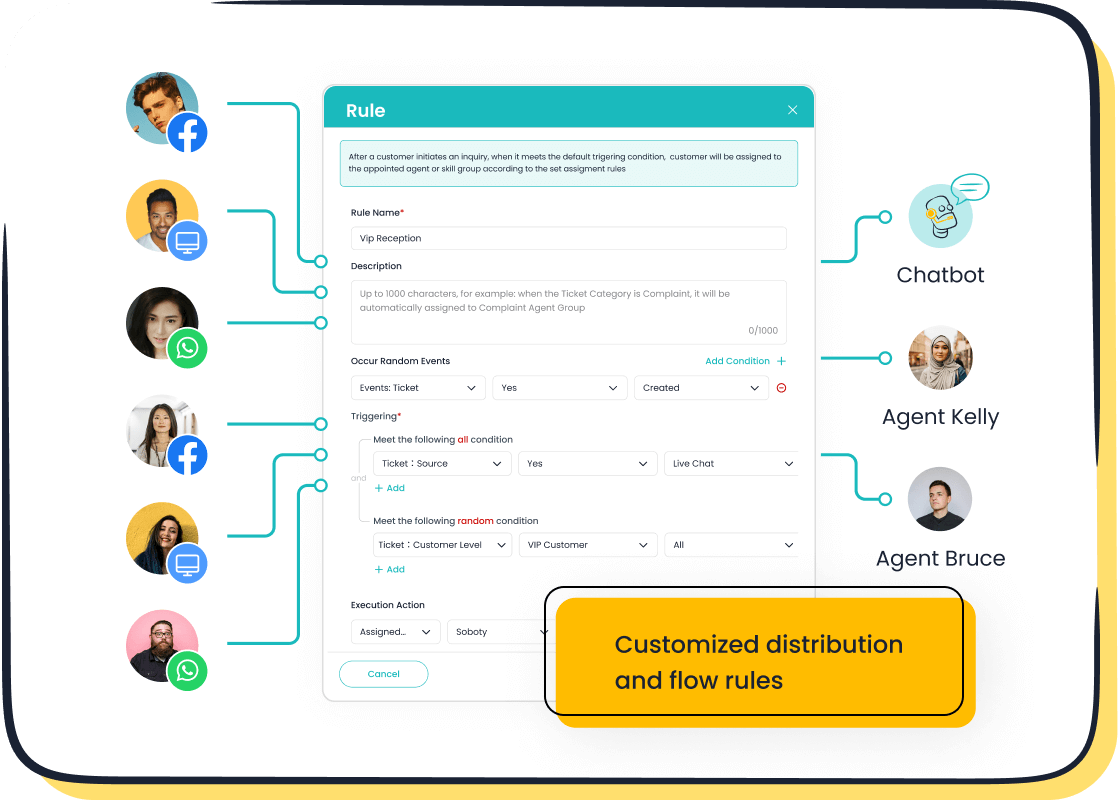
Sobot’s AI-powered solutions, like Live Chat, can help you scale your ecommerce customer service during these busy times. By automating repetitive tasks and providing instant responses, you’ll keep customers satisfied even when demand surges.
Reducing high return and refund rates
Returns and exchanges are a major challenge in ecommerce operations management. Did you know ecommerce stores face an 18.1% return rate compared to just 8-10% for physical stores? Common reasons include size issues (30-40%), product mismatches (22%), and damaged items (20%).
To reduce these rates, focus on clear product descriptions, high-quality images, and accurate sizing guides. Offering virtual try-ons or augmented reality tools can also help customers make better decisions.
| Evidence Type | Statistic/Fact |
|---|---|
| Return Rate Comparison | Ecommerce stores experience an 18.1% return rate compared to 8-10% for physical stores. |
| Common Return Reasons | Size or fit issues account for approximately 30-40% of all ecommerce returns. |
| Product Mismatch | Product not matching description or customer expectations represents about 22% of returns. |
| Damaged Items | Damaged items during shipping constitute roughly 20% of returns. |
| Buyer's Remorse | Accounts for 15-20% of products sent back to sellers. |
Sobot’s Live Chat can assist by answering pre-purchase questions, reducing mismatches and buyer’s remorse. With AI-driven insights, you can also identify patterns in returns and address them proactively.
Addressing delayed responses and customer frustration
Nobody likes waiting, especially when they have a pressing issue. A Hubspot survey revealed that 90% of customers consider an immediate response crucial. Delayed replies can lead to frustration and even lost customers.
Here’s how you can tackle this:
- Use automation to handle simple queries instantly and prevent ticket backlogs.
- Implement scripts and templates to speed up responses.
- Prioritize tickets based on urgency, ensuring critical issues get resolved first.
Sobot’s omnichannel Live Chat ensures you’re always available on your customers’ preferred platforms. Its AI tools help you respond faster, keeping frustration at bay and building trust.
Balancing automation with human interaction for better service
Automation has revolutionized ecommerce customer care, but relying on it entirely can feel impersonal. Customers want quick answers, yet they also crave empathy and understanding. Striking the right balance between automation and human interaction is key to delivering exceptional service.
Why does this balance matter? Research shows that combining automation with human touch improves customer satisfaction. Here’s how successful organizations measure their performance:
- Operational efficiency metrics ensure smooth workflows.
- Customer satisfaction scores reflect how happy your customers are.
- First-contact resolution rates show how often issues get solved on the first try.
- Emotional connection measures track how well you build trust.
- Long-term retention rates reveal the value of lasting relationships.
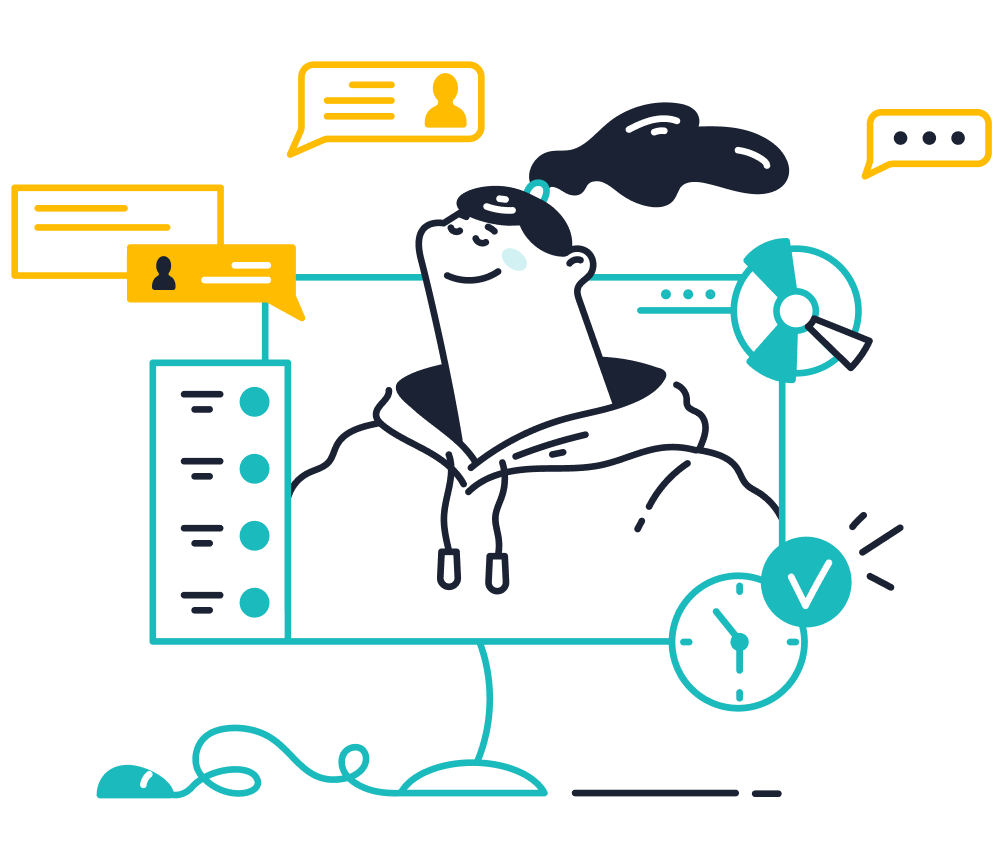
Automation shines when handling repetitive tasks like order tracking or FAQs. Tools like Sobot Live Chat use AI to provide instant responses, saving time for both you and your customers. But when a customer faces a complex issue, human agents step in to offer empathy and personalized solutions. This strategic integration ensures you use automation where it’s most effective while reserving human interaction for moments that truly matter.
Take Sobot Live Chat, for example. It combines AI-powered tools with omnichannel support, letting you respond instantly across platforms like WhatsApp, Instagram, and Telegram. Its intelligent assignment feature ensures that urgent queries reach the right agent, while AI copilots assist agents in crafting thoughtful responses. This blend of automation and human expertise keeps customers happy and builds loyalty.
Maintaining channel choice also enhances satisfaction. Customers appreciate the freedom to choose between automated chatbots and live agents based on their needs. By offering both options, you create a seamless experience that caters to everyone.
In ecommerce customer care, balance isn’t just a buzzword—it’s a strategy for success. When you combine the speed of automation with the empathy of human interaction, you create a service experience that customers won’t forget.
Building a Winning Ecommerce Customer Care Strategy
Creating a robust customer service strategy is essential for thriving in today’s competitive ecommerce landscape. Let’s explore how documenting SOPs, setting benchmarks, and tracking KPIs can transform your ecommerce customer service into a well-oiled machine.
Documenting SOPs for consistent service delivery
Standard Operating Procedures (SOPs) are the backbone of consistent customer service. They ensure your team handles every interaction with the same level of care and efficiency, no matter the situation. Why does this matter? Because consistency builds trust, and trust keeps customers coming back.
Here’s what the numbers say:
- 91% of consumers are more likely to make repeat purchases after a positive service experience.
- 69% would shop more frequently at stores offering consistent service.
- On the flip side, 40% of customers stop doing business with brands that deliver poor service repeatedly.
By documenting SOPs, you create a playbook for your team. This can include guidelines for handling inquiries, managing order fulfillment issues, and resolving complaints. Tools like Sobot Live Chat can help you implement these SOPs seamlessly. With features like intelligent assignment and AI copilots, your team can follow standardized workflows while still personalizing interactions.
Pro Tip: Regularly review and update your SOPs to reflect changes in customer expectations or business processes. This keeps your service fresh and relevant.
Setting response time and resolution benchmarks
Speed matters in ecommerce customer service. Customers expect quick answers, especially during the checkout process or when tracking orders. Setting clear benchmarks for response and resolution times ensures your team meets these expectations consistently.
Here’s a quick look at some key benchmarks:
| Metric | Description | Formula | Example |
|---|---|---|---|
| First Response Time (FRT) | Measures how quickly a support rep responds to a customer inquiry. | FRT = Total first response time for all tickets ÷ Total number of interactions | If 100 queries take 500 minutes, FRT = 500/100 = 5 minutes per query. |
| First Contact Resolution (FCR) | Percentage of customer queries resolved in the initial interaction. | FCR (%) = (Number of issues resolved in first contact ÷ Total issues) x 100 | If 80 out of 100 issues are resolved, FCR = (80/100) x 100 = 80%. |
| Average Resolution Time (ART) | Average time a support rep spends on customer interactions. | ART = Total handle time for all tickets ÷ Total number of interactions | If 600 minutes for 30 tickets, ART = 600/30 = 20 minutes per ticket. |
| Customer Satisfaction Score (CSAT) | Gauges customer happiness with a product or service. | CSAT (%) = (Number of satisfied customers ÷ Total responses) x 100 | If 80 out of 100 rate 4 or 5, CSAT = (80/100) x 100 = 80%. |
| Net Promoter Score (NPS) | Indicates likelihood of customers recommending products/services. | N/A | N/A |
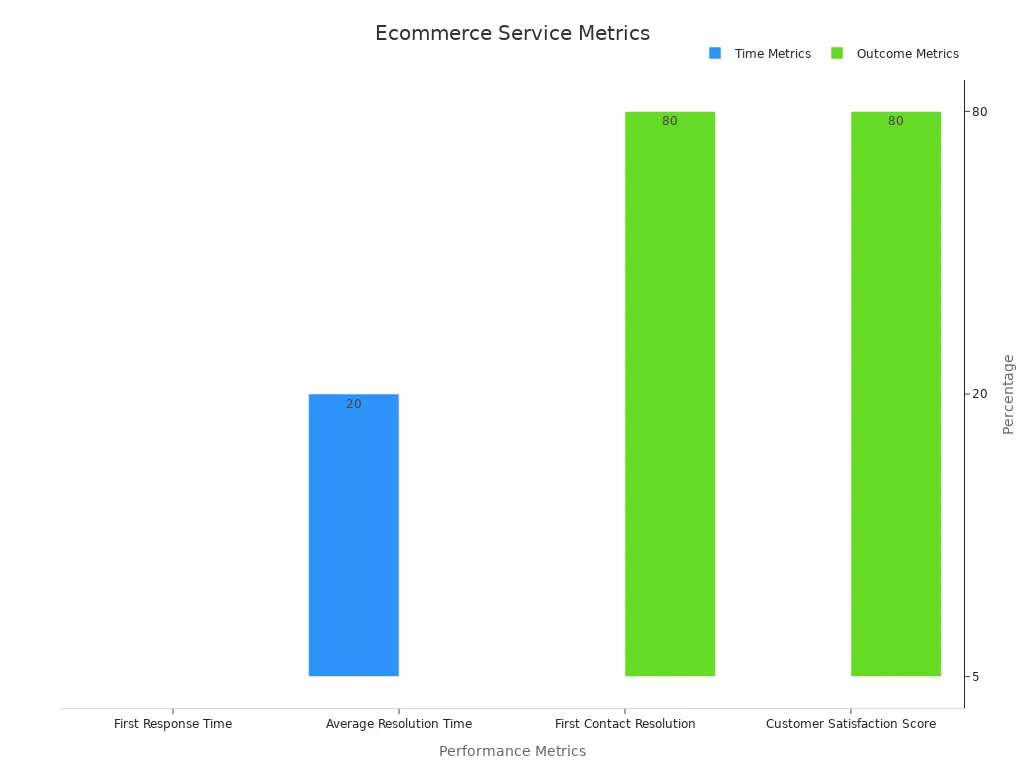
Sobot Live Chat can help you hit these benchmarks effortlessly. Its AI-powered tools ensure faster first responses, while features like built-in analytics allow you to monitor metrics like FRT and FCR in real time. This means you can identify bottlenecks and improve your service continuously.
Identifying and tracking key performance indicators (KPIs)
Tracking the right KPIs is like having a GPS for your ecommerce customer service strategy. It shows you where you’re excelling and where you need to improve. But which KPIs should you focus on?
Here are some must-track metrics:
- Traffic source/medium: Understand where your visitors come from to tailor their experience.
- Organic traffic sessions: Measure how well your site engages users from search engines.
- SEO keyword positions: Track rankings to boost visibility and attract more customers.
By monitoring these KPIs, you can make data-driven decisions to enhance your service. For example, if organic traffic sessions are low, you might need to optimize your site for better search engine performance. Sobot’s built-in analytics can simplify this process by providing actionable insights. You’ll know exactly where to focus your efforts to improve customer satisfaction and drive sales.
Quick Tip: Use satisfaction surveys and feedback loops to complement your KPI tracking. This gives you a fuller picture of how customers perceive your service.
Empowering teams with training and tools like Sobot Live Chat
Your customer service team is the backbone of your ecommerce business. When your team feels confident and equipped, they can deliver the kind of customer care that keeps shoppers coming back. But how do you empower them to perform at their best? The answer lies in two key areas: training and the right tools.
Why training matters for ecommerce customer care
Training isn’t just a one-time event—it’s an ongoing process. Well-trained teams handle customer inquiries faster, solve problems more effectively, and create positive experiences. According to a study by LinkedIn, 94% of employees say they would stay longer at a company that invests in their learning and development. This means training doesn’t just benefit your customers; it also helps you retain top talent.
Here’s what effective training should cover:
- Product Knowledge: Your team should know your products inside and out. This helps them answer questions confidently and recommend the right solutions.
- Communication Skills: Clear, empathetic communication builds trust. Teach your team how to handle tough situations with professionalism.
- Technology Training: Familiarity with tools like Sobot Live Chat ensures your team can use them to their full potential.
Pro Tip: Offer regular refresher courses and role-playing exercises. These keep your team sharp and ready for any challenge.
How Sobot Live Chat empowers your team
Even the best training can only go so far without the right tools. That’s where Sobot Live Chat comes in. This powerful platform equips your team with everything they need to provide exceptional ecommerce customer care.
Here’s how Sobot Live Chat makes a difference:
- Unified Workspace: Your team can manage all customer interactions—whether they’re on WhatsApp, Instagram, or your website—from one place. No more switching between platforms.
- AI Assistance: Sobot’s AI copilots help agents craft quick, accurate responses. This reduces response times and boosts customer satisfaction.
- Built-in Analytics: With over 150 indicators, your team can track performance and identify areas for improvement. For example, you can monitor first response times and resolution rates to ensure you’re meeting benchmarks.
- Customizable Widgets: Match the chat interface to your brand’s look and feel. This creates a seamless experience for your customers.

Imagine this: A customer asks about a delayed order. With Sobot Live Chat, your agent can instantly pull up the order details, provide an update, and even offer a discount for the inconvenience—all without leaving the chat window. That’s the kind of efficiency that builds loyalty.
Combining training and tools for maximum impact
When you pair comprehensive training with a tool like Sobot Live Chat, you create a winning formula for ecommerce customer care. Your team becomes more efficient, your customers feel valued, and your business thrives.
Here’s a quick checklist to get started:
- Invest in Training: Focus on product knowledge, communication, and technology skills.
- Implement Sobot Live Chat: Use its features to streamline workflows and enhance customer interactions.
- Monitor Performance: Use analytics to track KPIs and adjust your strategy as needed.
Did You Know? Businesses using Sobot Live Chat have seen a 38% increase in conversion rates. That’s the power of combining great training with the right tools.
Empowering your team isn’t just about giving them the tools they need—it’s about showing them how to use those tools effectively. With Sobot Live Chat and a strong training program, you’ll set your team up for success and take your ecommerce customer care to the next level.
Ecommerce Best Practices for Customer Care in 2025
Leveraging AI for smarter, faster support
AI is transforming how you deliver customer care in ecommerce. It’s no longer just a tool; it’s a game-changer. With AI, you can provide smarter, faster support that keeps your customers happy and engaged. Imagine responding to inquiries in seconds or resolving issues before they even arise. That’s the power of AI.
Here’s what AI can do for your ecommerce business:
| Benefit | Description |
|---|---|
| Reduces response time | AI chatbots can respond to customer inquiries in seconds, enhancing engagement and conversion rates. |
| Cuts customer service costs | Automates repetitive inquiries, reducing the need for a large human support team. |
| Improves customer experience | Provides personalized recommendations and proactive support based on customer behavior. |

AI-powered tools like Sobot Live Chat take this to the next level. They automate up to 70% of repetitive tasks, freeing your team to focus on complex issues. Plus, with a 90% initial resolution rate, you can ensure your customers leave satisfied after the first interaction. Whether it’s answering FAQs or offering tailored product suggestions, AI makes your service faster and more efficient.
But it’s not just about speed. AI also helps you anticipate customer needs. For example, if a shopper abandons their cart, an AI system can send a personalized reminder or discount offer. This proactive approach boosts conversions and builds loyalty. By leveraging AI, you’re not just keeping up with ecommerce trends—you’re setting the standard.
Offering seamless omnichannel support with tools like Sobot Live Chat
Your customers don’t stick to one platform, so why should your support? In 2025, seamless omnichannel support is a must-have for ecommerce businesses. Whether your customers reach out via WhatsApp, Instagram, or your website, they expect a consistent experience. Meeting them where they are builds trust and keeps them coming back.
Sobot Live Chat makes omnichannel support effortless. It unifies all your communication channels into a single workspace. This means your team can manage inquiries from multiple platforms without switching tools. Imagine responding to a WhatsApp message, an Instagram DM, and a website chat—all from one dashboard. That’s the kind of efficiency that keeps your customers happy.
Here’s how omnichannel support benefits your ecommerce business:
- Improved Accessibility: Customers can contact you on their preferred platform.
- Faster Response Times: A unified workspace reduces delays.
- Consistent Experience: Your brand voice stays the same across all channels.
For example, a customer might start a conversation on Instagram but switch to email for follow-up. With Sobot Live Chat, your team has all the context they need to continue the conversation seamlessly. This level of integration not only enhances the customer experience but also boosts your team’s productivity.
Omnichannel support isn’t just a feature; it’s a necessity. By offering it, you show your customers that you value their time and convenience. And when they feel valued, they’re more likely to stick with your brand.
Personalizing customer interactions to enhance satisfaction
Personalization isn’t just a buzzword—it’s a proven strategy for boosting customer satisfaction and retention. In fact, 76% of consumers are more likely to buy from brands that offer personalized experiences. When you tailor your interactions to each customer’s preferences, you make them feel seen and appreciated.
Here’s what the numbers say about personalization:
| Statistic | Insight |
|---|---|
| 76% | Consumers are more likely to purchase from brands that provide personalization. |
| 59% | Personalized engagement based on past interactions is deemed important for business success. |
| 71% | Consumers prefer personalized experiences, influencing their email interactions. |
| 56% | Users are likely to return to websites that recommend products based on their preferences. |

Sobot Live Chat excels at personalization. Its AI tools analyze customer behavior to offer tailored recommendations. For instance, if a shopper frequently browses a specific category, the system can suggest related products or promotions. This not only enhances their shopping experience but also increases your chances of making a sale.
But personalization goes beyond product recommendations. It’s about creating meaningful connections. Address your customers by name, remember their past interactions, and anticipate their needs. These small touches make a big difference. They show your customers that you care, turning one-time buyers into loyal advocates.
In ecommerce, personalization isn’t optional—it’s expected. By investing in tools like Sobot Live Chat, you can deliver the tailored experiences your customers crave. And when you do, you’ll see the results in higher satisfaction, better retention, and increased revenue.
Proactively addressing customer concerns through feedback loops
You know how frustrating it feels when a company ignores your feedback, right? Customers want to feel heard, and feedback loops are the perfect way to show them you’re listening. These loops aren’t just about collecting opinions—they’re about acting on them to improve your service and build trust.
Here’s why feedback loops matter:
- Companies that prioritize customer feedback can boost retention rates by 20-40%, according to Bain & Company.
- BrightLocal found that 85% of customers are more likely to stick with a brand that delivers a positive experience, while 80% won’t return if their complaints are ignored.
- Harris Poll revealed that 76% of customers who face unresolved issues will take their business elsewhere.
So, how can you use feedback loops effectively? Start by asking for feedback at key moments, like after a purchase or customer service interaction. Use tools like Sobot Live Chat to collect responses instantly. Its built-in analytics can help you spot trends, like recurring complaints or popular product features.
Once you’ve gathered feedback, act on it. If customers mention slow delivery times, work on speeding up your logistics. If they love a specific product, highlight it in your marketing campaigns. When customers see their input making a difference, they’ll feel valued—and that’s how you turn casual shoppers into loyal fans.
Pro Tip: Use satisfaction surveys in Sobot Live Chat to close the loop. Ask customers if they’re happy with the changes you’ve made. This shows them you’re committed to improving their experience.
Feedback loops aren’t just a strategy—they’re a promise to your customers that their voice matters. When you deliver on that promise, you’ll see the results in higher retention rates, better reviews, and stronger brand loyalty.
Ensuring accessibility and inclusivity in customer care
Accessibility isn’t just about compliance—it’s about creating a welcoming experience for everyone. Imagine a customer with visual impairments trying to navigate your website or a non-native speaker struggling to understand your chatbot. If your ecommerce customer care doesn’t address these needs, you risk alienating a huge segment of your audience.
The Accessibility Testing Service Market highlights this shift. Valued at $9.9 billion in 2022, it’s expected to grow at a compound annual rate of 22.5% through 2030. This growth reflects the increasing importance of inclusivity in customer care.
How can you ensure your service is accessible? Start by offering features that cater to diverse needs. Sobot Live Chat, for example, includes auto-translation for bi-directional communication. This makes it easier for customers to interact in their preferred language. Its customizable widgets can also be designed to meet accessibility standards, ensuring everyone can use them comfortably.
Inclusivity goes beyond technology. Train your team to handle inquiries with empathy and cultural sensitivity. For instance, if a customer mentions a disability, your agents should know how to offer solutions without making them feel singled out.
Did You Know? Businesses that prioritize inclusivity often see higher customer satisfaction rates. When customers feel valued, they’re more likely to recommend your brand to others.
By making accessibility and inclusivity a priority, you’re not just meeting legal requirements—you’re showing your customers that you care about their unique needs. And when you do that, you’ll build a reputation as a brand that truly values its customers.
Top Tools and Technologies for Ecommerce Customer Care

AI-powered chatbots and virtual assistants
AI-powered chatbots and virtual assistants are revolutionizing ecommerce customer service. They’re like your 24/7 support team, always ready to help customers with instant responses. These tools can handle multiple queries at once, reducing wait times and keeping your customers happy. Plus, they’re great at managing repetitive tasks, like answering FAQs or tracking orders.
Here’s why they’re a game-changer:
- They provide round-the-clock support, ensuring no customer feels ignored.
- They save businesses up to $8 billion annually by automating simple tasks.
- They enhance customer experiences with personalized product recommendations.
- They guide users through checkout, reducing cart abandonment rates.
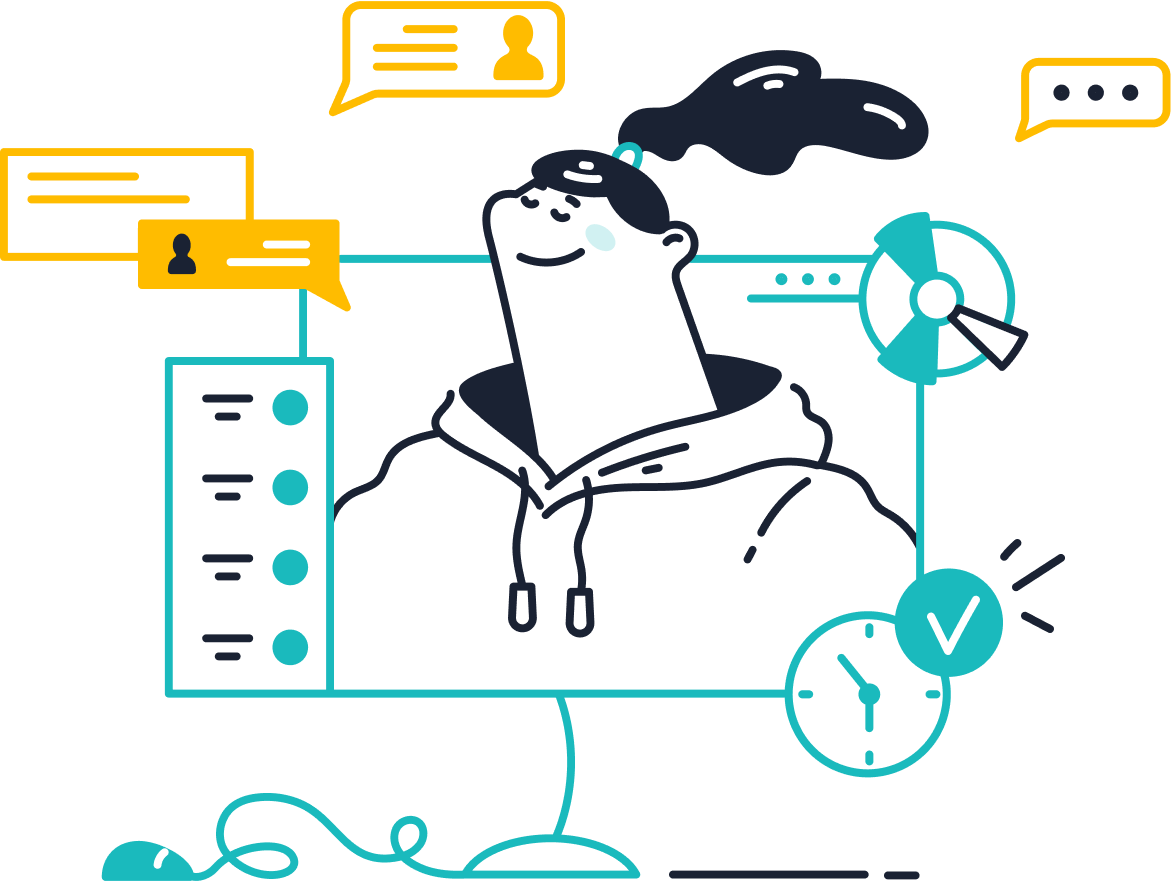
Imagine a customer browsing your site late at night. Instead of waiting until morning for answers, they get instant help from an AI chatbot. Tools like Sobot Live Chat take this even further by combining AI with human-like interactions. This ensures your customers feel valued while you streamline operations.
Helpdesk and ticketing systems for streamlined support
Helpdesk and ticketing systems are essential for keeping your ecommerce customer service organized. They let you track, prioritize, and resolve customer issues efficiently. With these systems, you can ensure no query slips through the cracks.
Did you know 88% of customers expect brands to offer self-service options? Helpdesk systems empower them to find answers independently, reducing the load on your support team. For example, Pawz.com cut agent-handled interactions by 50% after implementing a helpdesk solution. That’s a huge boost in efficiency!
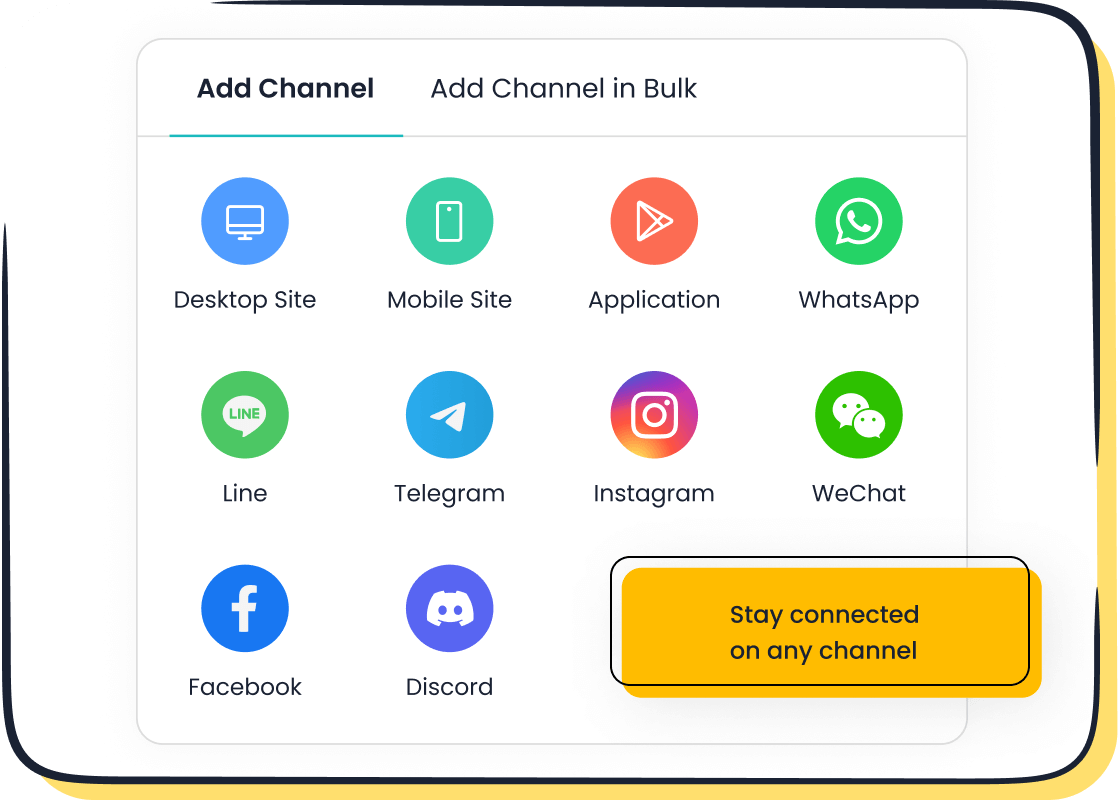
Sobot’s ticketing system is a perfect example. It automates workflows, manages SLAs, and keeps everything in one place. Whether it’s email ticketing or live chat, your team can handle it all seamlessly. This not only improves response times but also enhances customer satisfaction.
Customer relationship management (CRM) platforms
CRM platforms are the backbone of building strong relationships with your customers. They give you a complete view of customer behavior, helping you tailor your interactions. From personalized marketing campaigns to better inventory planning, CRMs make your ecommerce operations smarter.
Here’s how they help:
| Performance Metric | Description |
|---|---|
| Enhanced Sales Team Performance | Customizable dashboards improve sales processes and visibility. |
| Improved Customer Experience | Engaging customers through preferred channels enhances satisfaction. |
| Better Inventory Planning and Forecasting | Insights into customer behavior aid in smarter inventory decisions. |
| Increased Marketing Effectiveness | Automated campaigns based on customer actions shorten sales cycles. |
With tools like Sobot Live Chat, you can integrate CRM capabilities directly into your customer service. This means your team has all the context they need to provide personalized, efficient support. When customers feel understood, they’re more likely to stick around—and that’s great for your bottom line.
Social media monitoring and engagement tools
Social media isn’t just for sharing memes or promoting products anymore. It’s become a vital part of ecommerce customer care. Platforms like Instagram, Facebook, and Messenger are where your customers hang out—and they expect you to be there too.
Why does this matter? Because 35% of U.S. consumers use Instagram for customer service, making it the second most popular platform after Facebook. Plus, 74% of online adults feel more connected to businesses when they can message them directly. If you’re not responding quickly, you’re risking customer loyalty. Nearly 73% of social media users will choose a competitor if a brand doesn’t reply to their messages.
Here’s how social media monitoring tools can help:
- Track mentions: Know when your brand is being talked about, whether it’s praise or complaints.
- Engage instantly: Respond to inquiries within minutes, not hours. Brands like MeUndies aim for a 60-minute response time to keep customers happy.
- Analyze sentiment: Understand how customers feel about your brand and products.
Sobot Live Chat integrates seamlessly with social media platforms like Instagram and Messenger. It lets you manage all conversations from one dashboard, so you never miss a message. Its AI tools even help you craft quick, thoughtful responses, ensuring your customers feel valued.
Pro Tip: Use social media monitoring tools to identify trends. If customers frequently ask about a product feature, highlight it in your next campaign.
By staying active and responsive on social media, you’re not just solving problems—you’re building relationships that keep customers coming back.
Analytics platforms for actionable customer insights
Data is your secret weapon in ecommerce customer care. Analytics platforms turn raw numbers into actionable insights, helping you understand your customers better and improve their experience.
What can you track? Metrics like conversion rates, average order value, and customer lifetime value reveal how well your strategies are working. For example:
| Metric | Description |
|---|---|
| Conversion Rate | Percentage of visitors who take a desired action, like making a purchase. |
| Average Order Value | Average amount spent per transaction, showing purchasing behavior. |
| Customer Lifetime Value | Total revenue expected from a customer over their relationship with your business. |
But it doesn’t stop there. You can also monitor website traffic, clicks, sales data, and customer feedback. These insights help you spot patterns, like which products are popular or why customers abandon their carts.
Sobot’s built-in analytics make this process simple. With over 150 indicators, you can track everything from response times to customer satisfaction scores. Imagine knowing exactly where your team excels and where improvements are needed—all in real time.
Quick Tip: Use customer feedback to complement your analytics. If customers mention slow delivery times, prioritize logistics improvements.
Analytics platforms don’t just show you what’s happening—they guide you on what to do next. By leveraging these tools, you’ll make smarter decisions that enhance your ecommerce customer care and boost your bottom line.
Real-World Examples of Excellence in Ecommerce Customer Care
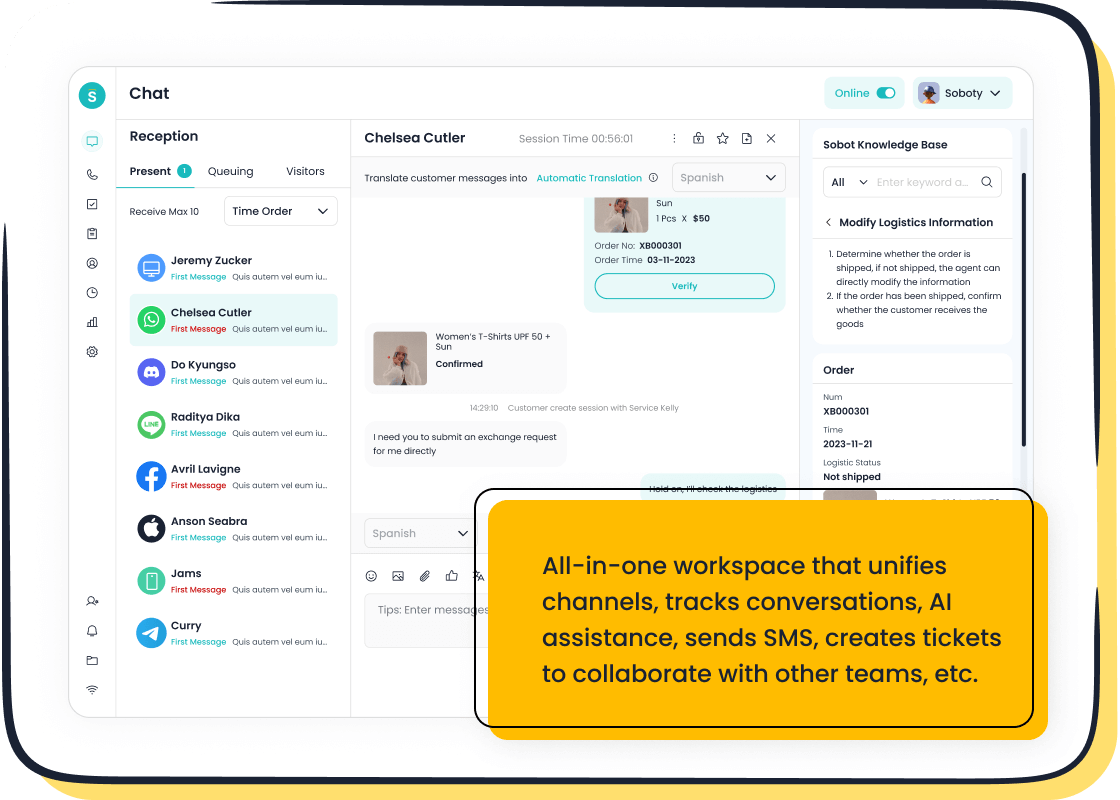
Case study: OPPO's success with Sobot's AI and Live Chat solutions
OPPO, a global leader in smart devices, faced a challenge familiar to many ecommerce businesses—managing high volumes of customer inquiries during peak shopping periods. To tackle this, they turned to Sobot's AI and Live Chat solutions. The results? Nothing short of impressive.
- OPPO achieved an 83% chatbot resolution rate, allowing their human agents to focus on more complex issues.
- They saw a 57% increase in repurchase rates, proving that efficient customer care directly impacts loyalty.
By integrating Sobot's tools, OPPO streamlined their customer service operations. Their chatbots handled repetitive queries, while human agents stepped in for personalized support. This balance between automation and human interaction not only improved efficiency but also enhanced the overall customer experience.
Case study: Luckin Coffee's omnichannel strategy with Sobot
Luckin Coffee, a trailblazer in the coffee industry, knows the importance of meeting customers where they are. With Sobot's omnichannel solutions, they created a seamless customer care experience across platforms like WhatsApp, Instagram, and their mobile app.
Imagine a customer placing an order through the app and then reaching out via Instagram for an update. With Sobot, Luckin Coffee's team could access all the necessary details in one unified workspace. This level of integration ensured faster responses and happier customers.
Their strategy highlights a key lesson: omnichannel support isn't just a convenience—it's a necessity in today's ecommerce landscape. By unifying communication channels, Luckin Coffee set a new standard for customer care.
Lessons from industry leaders in ecommerce customer care
What can you learn from these success stories? It all comes down to tracking the right metrics and adapting your strategies. Industry leaders focus on:
- Conversion rates to measure how well their sites turn visitors into buyers.
- Bounce rates to gauge how engaging their websites are.
- Regularly analyzing these metrics to refine their customer care strategies.
By following their lead, you can improve your ecommerce operations. Tools like Sobot Live Chat make it easy to monitor these metrics and adjust your approach. Whether it's reducing bounce rates or boosting conversions, the right tools and strategies can transform your customer care.
Ecommerce customer care in 2025 isn’t just important—it’s transformative. You’re not just solving problems; you’re shaping experiences that drive loyalty and growth. Here’s why it matters:
- 98% of shoppers check reviews before buying, showing how great service generates positive feedback.
- Customer experience now outweighs traditional advertising for most U.S. consumers.
- Exceptional service creates moments that spark word-of-mouth referrals.
| Key Insight | Impact |
|---|---|
| Free delivery sways 45% of online shoppers | Shapes service offerings |
| Positive experiences boost referrals | Builds brand reputation |
| Excellent service increases conversions | Drives sales growth |
Tools like Sobot Live Chat make it easy to deliver this level of care. With AI-powered insights and omnichannel support, you’ll meet customer expectations and create lasting connections. Ready to elevate your ecommerce game? Start with Sobot today!
FAQ
What is ecommerce customer care, and why does it matter?
Ecommerce customer care ensures your customers have a smooth experience, from browsing to post-purchase. It matters because 93% of shoppers return to brands with great support. Tools like Sobot Live Chat help you deliver personalized service, boosting loyalty and sales.
How can Sobot Live Chat improve my ecommerce customer service?
Sobot Live Chat offers omnichannel support, AI-powered tools, and built-in analytics. It helps you respond faster, track customer interactions, and personalize experiences. Businesses using it have seen a 38% increase in conversions. Try it for free here.
What are the benefits of using AI in ecommerce customer care?
AI speeds up responses, reduces costs, and personalizes interactions. For example, AI chatbots can handle FAQs instantly, saving time for complex issues. Sobot’s AI tools automate 70% of tasks, ensuring smarter, faster support.
How does omnichannel support enhance customer satisfaction?
Omnichannel support lets customers reach you on their favorite platforms, like WhatsApp or Instagram. Sobot Live Chat unifies these channels into one workspace, ensuring consistent service. This convenience builds trust and keeps customers coming back.
Can Sobot Live Chat help reduce return rates?
Yes! Sobot Live Chat answers pre-purchase questions, reducing mismatches and buyer’s remorse. Its AI insights identify return patterns, helping you address issues proactively. This improves customer satisfaction and protects your revenue.
See Also
Enhancing Customer Satisfaction Through E-commerce Chatbots
Increasing Sales With E-commerce Live Chat Solutions
Excelling At Live Chat Within Retail Businesses